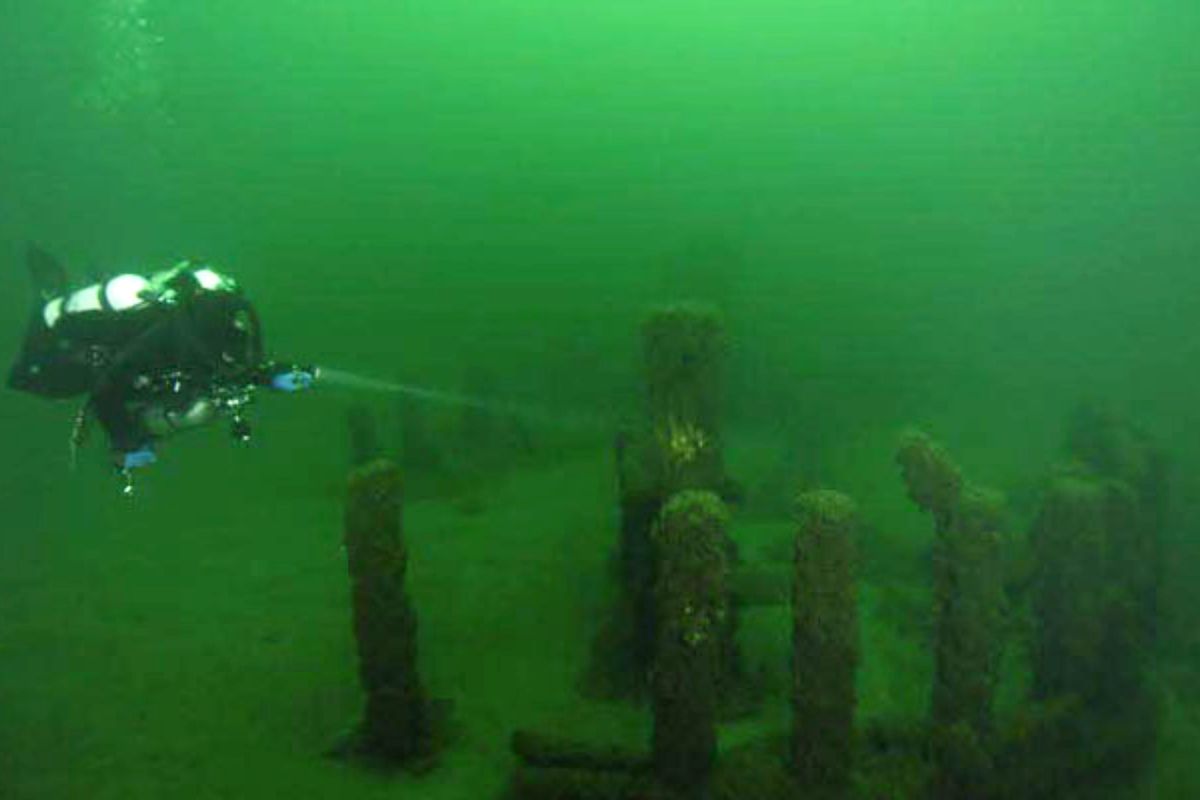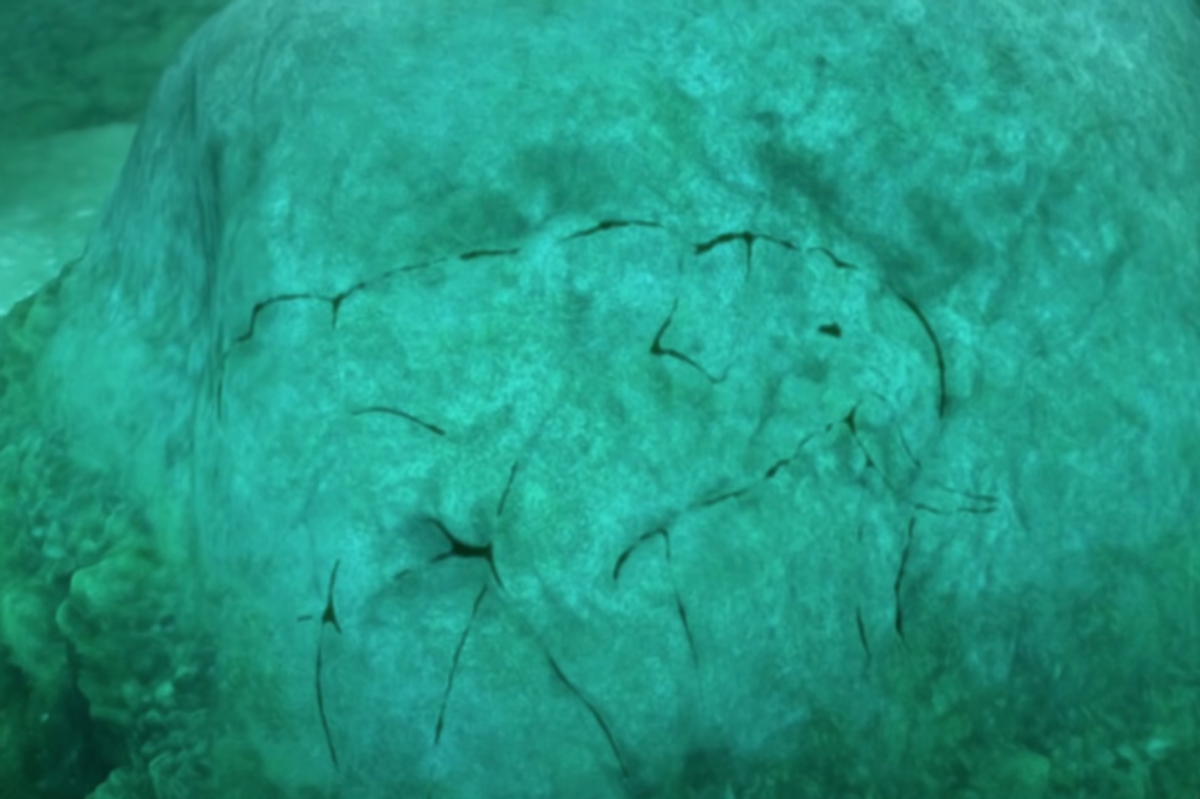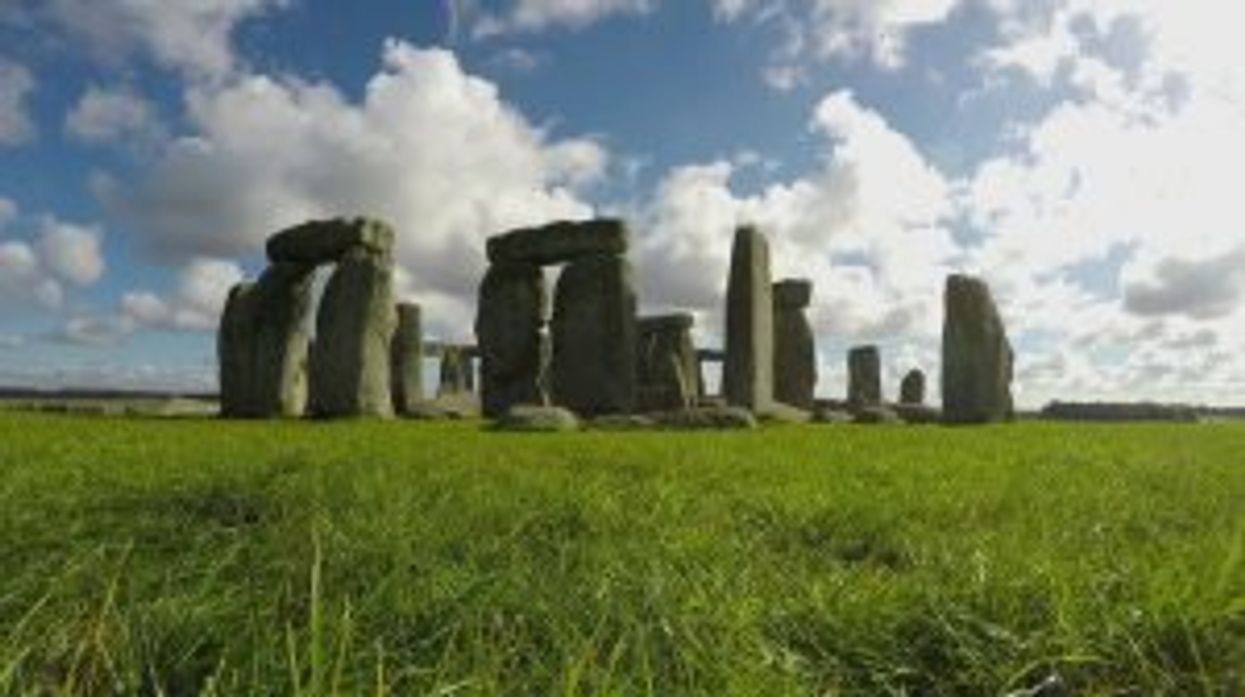Harriet Brewis
Oct 08, 2024
This Unknown Detail About Stonehenge Will Blow Your Mind!
ZMG - Amaze Lab / VideoElephant
There’s much we may never know about our earliest ancestors, like why we started to walk upright and how we managed to create structures that seem to defy the engineering capabilities of the time.
Stonehenge remains one of these great mysteries, with experts around the world divided over why exactly the prehistoric monument was built.
Now, to add to this age-old confusion, it has emerged that a similarly enigmatic stone structure has been found beneath the waters of Lake Michigan in the US.
Not only that, but this underwater creation is around 5,000 years older than its British counterpart.
The site was discovered in 2007 by a team of archaeologists led by Mark Holley, a professor of underwater archaeology at Northwestern Michigan College.
Holley and his colleagues were conducting a survey of the lake bed when they chanced upon a series of large stones, arranged in a circular pattern, just off the coast of Traverse City, Michigan.

Holley later admitted that the discovery, made at a depth of about 40 feet (12.1m), was completely unexpected, and that he and his team were initially unsure of what they’d found.
However, analysis soon suggested that the stones – some of which weighed up to 3,000lbs (around 1,360kg) – had deliberately been arranged in a circular pattern by humans, Medium reports.
This pattern is about 40 feet in diameter and features an inner circle of stones measuring around 20 feet in diameter.
The stones, which are all made of granite – found locally in the area – are estimated to be around 10,000 years old, thereby making the formation one of the oldest ever discovered in North America.
And yet, whilst the Lake Michigan stones are relatively similar in size and shape to the monoliths of Stonehenge, their origins are a lot murkier.
“Whilst they do seem to form a perfect geometric shape, they aren't stacked or connected in the same way,” scientist Rob Nelson explained in an episode titled ‘American Stonehenge’ for Discovery UK.
“And while there is evidence that prehistoric tribes roam to the Great Lakes for thousands of years, very little is known about them,” he added, stressing that he hasn’t seen anything “remotely resembling this formation in the archaeological record”.
Under Water Stonehenge Found in Lake Michigan | Secrets of the Undergroundwww.youtube.com
Nelson spoke to a man called Hank, whose ancestors, the Anishinaabe people, were among the first to inhabit the region.
Hank believes that his tribe’s prehistoric, hunter-gatherer forefathers – who settled in the area following the last Ice Age – placed the stones there for a sacred purpose.
“[In Anishabe culture], we refer to stones as animate objects because they come from the mother, the Earth, who is alive,” he explained, adding that the monument’s presence in the lake is proof that his people have been there a long time.
Meanwhile, Holley pointed out that the area was not underwater 10,000 years ago, and that communities had, indeed, settled on the exact spot where the stones had been laid.
“It would've been a wonderful place for people to live – near the coastline, close to resources, transportation's easy,” the archaeologist told Nelson.
However, he went on, 5,000 years later, the water levels rose, flooding the Lake Michigan basin.
Thanks to advanced technology called stereo photogrammetry, Nelson was able to stitch together photographs of the rocks to create an accurate 3D rendering of them, which he was then able to analyse in detail.
These revealed carvings and engravings on some of the stones, including an image of what appears to be a Mastodon.

Mastodons are extinct ancestors to elephants and woolly mammoths that were once one of the largest land animals ever to roam North America.
They stood up to 10 feet tall (3.1m), weighed upwards of 5,440kg (six tons) and lived during the Pleistocene Epoch, which lasted from about 2.6 million to 11,700 years ago.
The carvings suggest that the humans who built the site must have had some knowledge of these mammals, and maybe even hunted them.
Dr John O’Shea, Curator of Great Lakes Archaeology at the University of Michigan, noted this allusion to Mastodons, combined with the configuration of the formation – which includes a long line of rocks leading directly towards it – suggests that it could have been an ancient hunting structure known as a drive lane.
Dr O’Shea told Nelson that humans have used drive lanes for thousands of years to herd large groups of animals along a set path towards a kill zone, where the hunters lie in wait.
If this is the case, the site challenges the conventional belief that early humans weren’t capable of creating such sophisticated structures.
Nevertheless, the precise purpose of the structure and the identity of its architects remain a mystery – much like its much younger cousin all the way over in Salisbury.
Sign up for our free Indy100 weekly newsletter
Have your say in our news democracy. Click the upvote icon at the top of the page to help raise this article through the indy100 rankings
Top 100
The Conversation (0)














